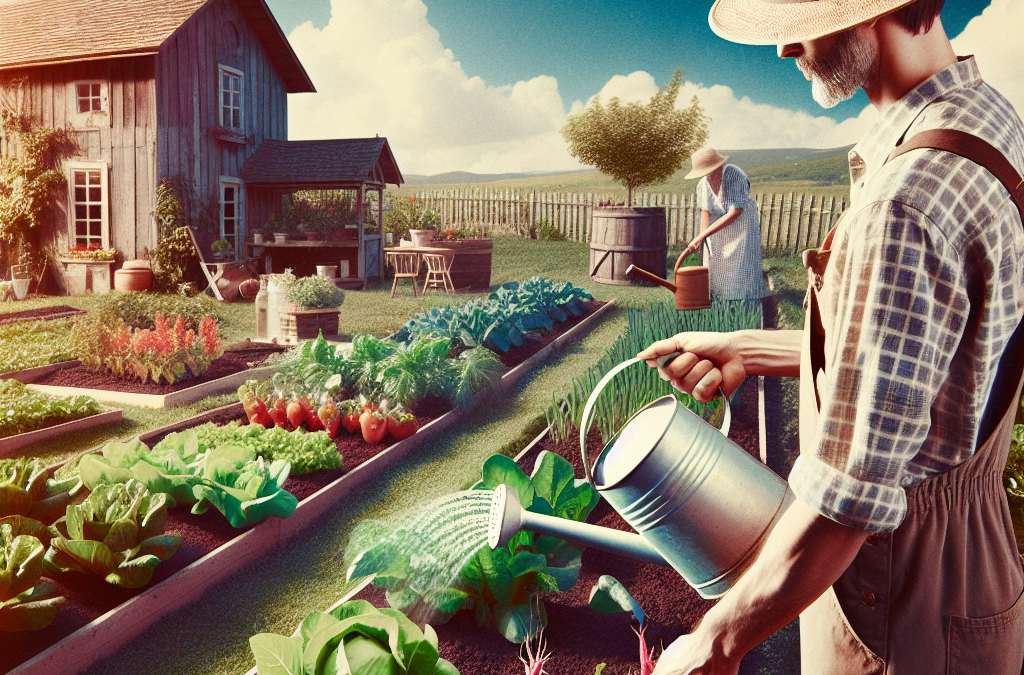Planning Your Garden Layout
Assessing Your Space
When I first decided to grow my own food, I had to take a long, hard look at my homestead. How much space did I have? Was it sunny all day, or would I have to manage what crops could handle partial shade? Sketching out my plot helped me visualize where I could plant everything. Trust me, having a plan is crucial!
I found out that a simple garden layout can save a lot of headache later on. Knowing which crops need more space and how things companion plant made a world of difference. For example, I learned that tomatoes and basil are great buddies, while cucumbers can sometimes crowd out their neighbors. Who knew that a little planning could lead to thriving veggies?
Finally, I considered the growing seasons in my area. Some plants are better suited for spring, others for fall, and you’ll want to make sure your harvest is spaced out. Mapping it all out not only makes the planting easier but also helps keep the garden looking gorgeous throughout the year.
Choosing the Right Crops
Know Your Preferences
Next up, picking the right crops is a blast but can also be a bit overwhelming. The first thing I did was consider what my family loves to eat. No use planting kale if nobody in the house wants to touch it! I found that choosing crops that actually get used makes the whole endeavor rewarding.
After figuring out preferences, I started browsing seed catalogs (which is both exciting and dangerous!). I made sure to choose plants that thrive in my climate. Checking hardiness zones and growing guides really helped narrow it down, and often local gardening stores have fantastic advice too.
Don’t forget about seasonal crops! Some things may flourish in spring and wither by fall, while others can be harvested throughout the summer. I really enjoyed diving into this world of seasonal gardening and even tried my hand at crop rotation!
Soil Preparation and Fertility
Testing Your Soil
If you’ve ever tried to grow a plant in poor soil, you know it’s like trying to run a race on crutches. First, I conducted a soil test. It’s not as daunting as it sounds! There are kits you can buy or local extension services can help out. Knowing the pH and nutrient levels allows you to make necessary amendments.
Once I had my test results, it was time to get dirty—literally! I mixed in organic compost and aged manure, and boy, did my garden thank me for it! These additions not only amped up the nutrient content but also aided aeration and drainage.
Always remember that healthy soil equals healthy plants. I learned that a solid investment in soil preparation leads to prolific harvests. This step transformed my gardening journey into a more fruitful and exciting adventure.
Watering Strategies
Understanding Water Needs
I used to think ‘water it and forget it’ was the way to go, but oh was I wrong! Each plant has its own hydration needs. Some need consistent moisture, while others prefer it drier. I learned through trial and error, and keeping a journal, what my plants preferred.
Setting up a drip irrigation system was a game changer for me. This setup kept water at the roots where it’s needed most, reducing waste and preventing pesky weeds that love water. Plus, I felt like a total homesteading pro!
Also, I learned to adjust my watering schedule based on the season. During the hotter months, I watered more often, while cooler weather allowed me to ease back. Observing the plants told me everything — droopy leaves or discolored stems were clear signs they needed my attention.
Harvesting and Enjoying Your Bounty
Timing Your Harvest
Nothing feels better than taking that first bite of a tomato you grew yourself. The key, however, is knowing when to harvest. Throughout my gardening journey, I’ve learned that each type of crop comes with its own harvesting tips. Some fruits are better picked when they’re slightly immature for best flavor.
I kept a close eye on my plants, using my garden journal to note what I harvest every week. By keeping consistent, I didn’t miss prime picking time and more importantly, I avoided letting produce go to waste. Talk about a win-win!
Now here comes the fun part – cooking! I discovered that fresh, homegrown food can take any meal from basic to extraordinary. I often invite friends and family over to share the harvest, making for great communal meals and memories.
FAQs about Growing Your Own Food on a Homestead
1. What if I don’t have much space for a garden?
You’d be surprised at how much you can grow in small spaces! Vertical gardening, container gardening, and raised beds can maximize what you’ve got. Even window boxes can hold herbs or small veggies!
2. How do I know what plants grow best in my area?
Check out your local agricultural extension website or ask neighbors who garden. They usually have excellent advice on what does well in your particular climate and soil type.
3. Is it hard to maintain a garden once it’s planted?
It can be a bit of work, but if you plan ahead and stay on top of watering, weeding, and monitoring for pests, it gets easier. Plus, it’s all part of the fun!
4. What’s the best time to start planting?
It really depends on your region, but typically spring is the prime planting season for most crops. You can also extend your growing season with a greenhouse or starts indoors.
5. How can I make sure my plants are healthy?
Regularly check soil moisture, watch for pests, and ensure good airflow around your plants. Also, rotating your crops yearly can prevent soil nutrient depletion and pest issues.





